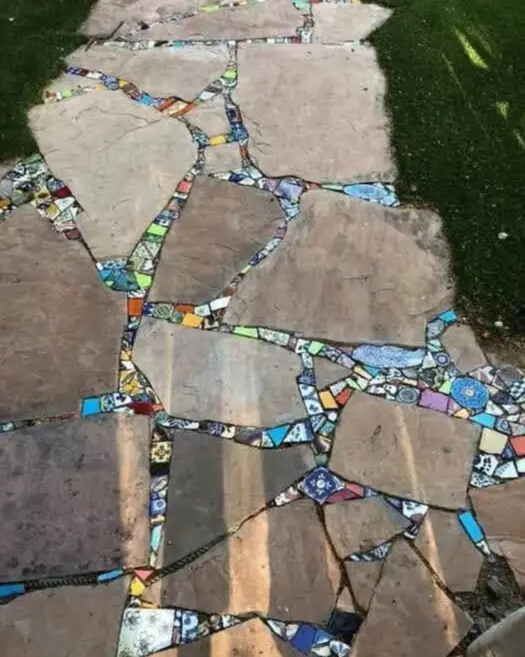
Many People Still Don’t Know The Meaning Behind Shoes Strung Up On A Power Line

If you’ve ever walked through a neighbourhood and spotted a pair of sneakers dangling from a power line, you might’ve shrugged and thought, “Just kids fooling around again.” For years, I assumed the same. As a child, the sight felt random — a mix of mischief, old shoes, and youthful energy tossed into the air.
But growing older has a way of reshaping what once seemed ordinary. The more I learned about the stories behind those suspended sneakers, the more I realized they carry far more meaning than I ever imagined.
The Many Theories Behind the Mysterious Hanging Shoes
What makes this phenomenon fascinating is that it isn’t tied to one clear explanation. Instead, it’s a patchwork of interpretations shaped by culture, geography, and time. Investigations, community reports, and local folklore all suggest different meanings depending on where you live.
A popular belief, especially in certain urban areas, is that shoes thrown over power lines mark territory for gangs or indicate nearby drug activity. A Reader’s Digest article highlights this view:
“One of the more popular theories about shoes on power lines is that they’re part of a system by which gangs mark their territory.”
WBEZ Chicago explored the topic as well, uncovering a wide range of explanations:
“Shoes on a wire: Untangling an urban myth… people said the shoes signify where to buy drugs; they memorialize victims of gun violence; or they represent a crew marking their block.”
But those aren’t the only interpretations. Some believe these hanging shoes serve as memorials for people who have passed away — a symbolic gesture of remembrance. Others see it as a rite of passage: graduating high school, leaving town, finishing military service, or shedding a former identity. Even Wikipedia’s entry on shoe throwing mentions these traditions.
And, of course, plenty of explanations are far more innocent: kids being bored, friendly dares, or simply a creative way to retire a worn-out pair of sneakers. As one writer noted, “the most common reason is that there isn’t really one.”
Why This Image Stayed With Me
Growing up, I walked past power lines almost every day — heading home from school, hanging out with friends, or running errands. I remember seeing those shoes swinging slightly in the breeze, their shadows stretching long across the pavement. Back then, I barely gave them a second thought.
But now, I view them differently. Each pair feels like a tiny cultural artifact — a marker of a memory, a ritual, or a story suspended in midair. Is it a memorial? A dare? A symbol? Or just a pair of forgotten sneakers tied up by boredom? In truth, it could be any of these things.
What strikes me most is how a single, everyday object — a shoe — can hold so many layered meanings. Our environment is full of these quiet symbols, stories we rarely pause to read.
The Gang and Drug Theory: Myth, Reality, or Something in Between?
The idea that shoes on power lines mark gang territory or drug-dealing hotspots is often repeated, but the evidence behind it is surprisingly thin.
WBEZ’s investigation found that while many people believe in the theory, experts are skeptical:
Sociologists and community workers said that although the belief persists, many consider it an urban legend. One scholar noted, “No one is going to put what they’re doing out there in that type of way to set themselves up to be arrested.”
iHeart-WBZ News also reported:
“The most common reason is kids just being kids. Retired police have said it might just be bored teenagers seeing who can toss their pair the farthest.”
So while the gang/drug explanation is dramatic — and often repeated in movies or TV — it’s not reliably supported across cities.
Memorials, Mischief, Rituals — and Everything in Between
Another interpretation that feels more grounded is the idea of memorials. In many communities, tossing a pair of shoes up to a power line is a tribute to someone who has passed away, particularly someone young or taken too soon.
In other cases, the shoes represent transitions — graduating, moving away, or marking the end of a chapter. One story from Michigan described students throwing their shoes after finishing college, leaving behind a symbolic piece of who they were.
And then there’s the simplest explanation: fun. Kids daring each other, testing their aim, or seeing whose shoes will hang the longest. Someone once described it perfectly: “It’s like graffiti for kids without spray paint.”
Why the Sight Has Become Less Common Today
Interestingly, hanging sneakers used to be far more widespread than they are now. In Chicago, for instance, city workers removed more than 1,100 pairs per year between 2008 and 2014 — but by 2014, that number dropped dramatically to around 111 pairs.
Why the decline?
-
Fewer exposed power lines in modernized neighborhoods
-
Increased cleanup efforts by cities and utility companies
-
Shifting youth culture and evolving traditions
The sneakers haven’t disappeared entirely — but the ritual isn’t as prominent as it once was.
What It Means to Me Now
These days, whenever I come across a pair of sneakers dangling from a wire, I pause for a moment. I wonder: Was this a tribute? A celebration? A quiet farewell? Or just two kids seeing who could throw higher?
It reminds me that our surroundings are full of stories, and even the most ordinary things can hold meaning. A dangling sneaker doesn’t just mark a place; it tells a story — sometimes loud, sometimes subtle, but always worth noticing.
Not everything in life has one fixed interpretation. The same pair of shoes can symbolize grief in one neighborhood, joy in another, and simple mischief somewhere else.
And maybe that’s the beauty of it: meaning often hangs quietly above us, waiting for someone to look up.
News in the same category


Seven Years Apart — One Roar of Recognition.

The Day Love Came in Sixes.

The Puppy Who Cried for His Brothers.

Mosaic of a Mother’s Heart — A Story of Breaking, Healing, and Becoming Whole Again.

KaBu’s Last Day in Chains — and His First Day of Freedom.

A LAST GIFT FROM MY FATHER THAT CHANGED MY FAMILY FOREVER

He’s The Brother Of A Hollywood Legend And A Dad Who Left His Baby Behind—Can You Guess This ’80s Heartthrob?

The Four Pieces In A Loved One’s Closet You’ll Regret Throwing Away

This Happy Little Boy’s Face Hid A Darkness That Would Shock The World

Off The RecordNadya Suleman, A Mom Of Octuplets Celebrates Their 15th Birthday

CelebrityDiane Keaton, Beloved Star Of “Father Of The Bride” And “The First Wives Club,” Dies At 79

Experts Reveal The Worst Places To Be If World War 3 Breaks Out — Some May Surprise You

I Went To Pick Up My Wife And Newborn Twins From The Hospital — But She Was Gone, Leaving Only A Note

Off The RecordMy Family Argued Over Grandma’s Will—I Took Her Dog Instead And Found The Secret She Left Behind

A Camera Was Set Up To Watch A Disabled Cat — No One Expected What It Would Capture

She Was Simply A Little Girl From Michigan — But Grew Up To Become One Of The Most Notorious Female Killers

A Father’s Unusual Mission: Reflective Vests for Deer After Tragedy
News Post

This Plant Is More Than Just a Kitchen Herb — It’s One of the Most Powerful on Earth

Many People Still Don’t Know The Meaning Behind Shoes Strung Up On A Power Line

Arnold Schwarzenegger’s Son Continues His Impressive Weight-Loss Journey

‘Get Out!’: Black Woman Banned from Restaurant After Refusing to Tip Waitress with ‘a Disgusting Attitude,’ But She Doesn’t Back Down, Video Shows

Stephen Hawking Predicts the End of the World Is Nearer Than We Think

Caroline Flack’s ex Lewis Burton says he’s received ‘online abuse’ in rare statement over Disney documentary

The Viral 70LB Baby That Was Featured On Jerry Springer Is All Grown Up, And You Better Sit Down Before Seeing Him Today

The Viral 70LB Baby That Was Featured On Jerry Springer Is All Grown Up, And You Better Sit Down Before Seeing Him Today

‘Wanna be from the Trenches So Bad’: Tiny Harris Claps Back After T.I. Embarrasses Son King at Their Grandchild’s First Party

3 Deadly Mistakes People Make with Water Heaters – Don’t Risk Your Life

The surprising vitamin that helps break down leg clots—are you getting enough?

Just Minced Meat, But Made This Way, It Becomes Irresistibly Delicious

Prince William steps out with King Charles for special Windsor Castle reception to mark Remembrance Day

Top 10 Occupations with the Highest Risk of Cancer

Women Who Drink Perilla Leaf Water with Lemon at These 3 Times: Brighter Skin and a Slim Waist

Why Is the Left Burner of a Gas Stove Not Ideal for Cooking?

Kelly Brook ‘horrified’ as GP offers her weight-loss jabs ahead of I’m A Celebrity stint: ‘I love my curves!’

Is It Dangerous to Stay Inside a Car During a Lightning Storm?

Tips to Distinguish Naturally Ripened Bananas from Chemically Ripened Ones
